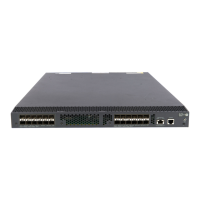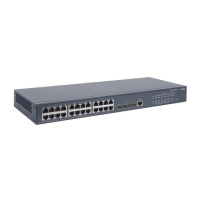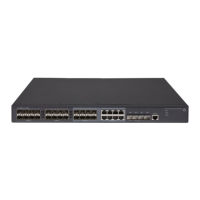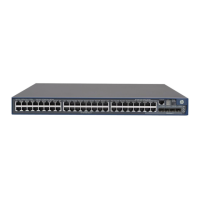75
Configuring class-based accounting
Class-based accounting collects statistics (in packets or bytes) on a per-traffic class basis. For example,
you can define the action to collect statistics for traffic sourced from a certain IP address. By analyzing
the statistics, you can determine whether anomalies have occurred and what action to take.
Configuration procedure
Ste
Command
Remarks
1. Enter system view.
system-view N/A
2. Create a traffic class and
enter traffic class view.
traffic classifier classifier-name [ operator
{ and | or } ]
By default, no traffic class is
configured.
3. Configure match criteria.
if-match match-criteria
By default, no match criterion is
configured.
For more information about the
if-match command, see ACL
and QoS Command Reference.
4. Return to system view.
quit N/A
5. Create a traffic behavior
and enter traffic behavior
view.
traffic behavior behavior-name
By default, no traffic behavior
is configured.
6. Configure the accounting
action.
accounting { byte | packet }
By default, no traffic
accounting action is
configured.
7. Return to system view.
quit N/A
8. Create a QoS policy and
enter QoS policy view.
qos policy policy-name
By default, no QoS policy is
configured.
9. Associate the traffic class
with the traffic behavior in
the QoS policy.
classifier classifier-name behavior
behavior-name
By default, a traffic class is not
associated with a traffic
behavior.
10. Return to system view.
quit N/A
11. Apply the QoS policy.
• Applying the QoS policy to an
interface
• Applying the QoS policy to a VLAN
• Applying the QoS policy globally
• Applying the QoS policy to the control
plane
Choose one of the application
destinations as needed.
By default, no QoS policy is
applied.

